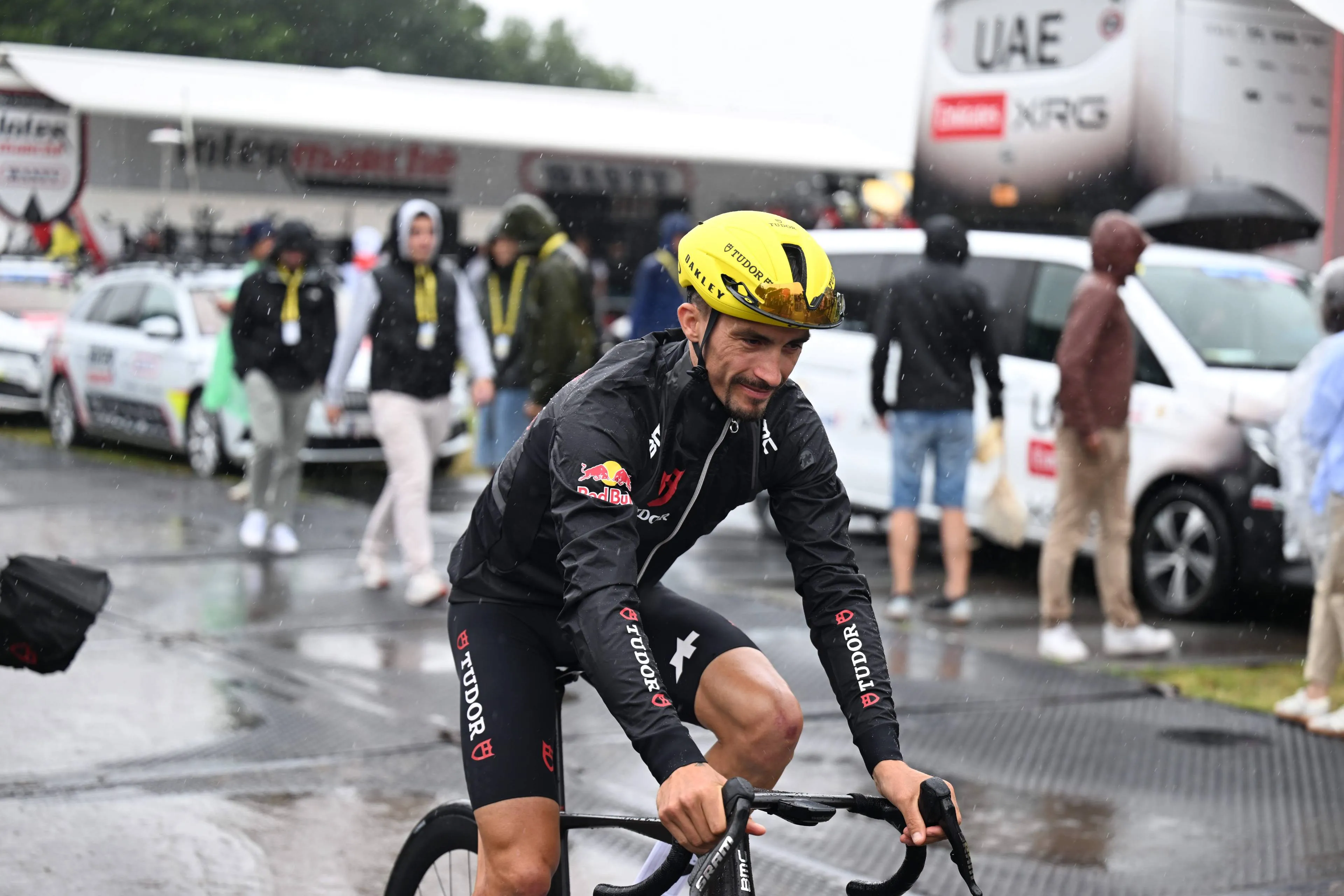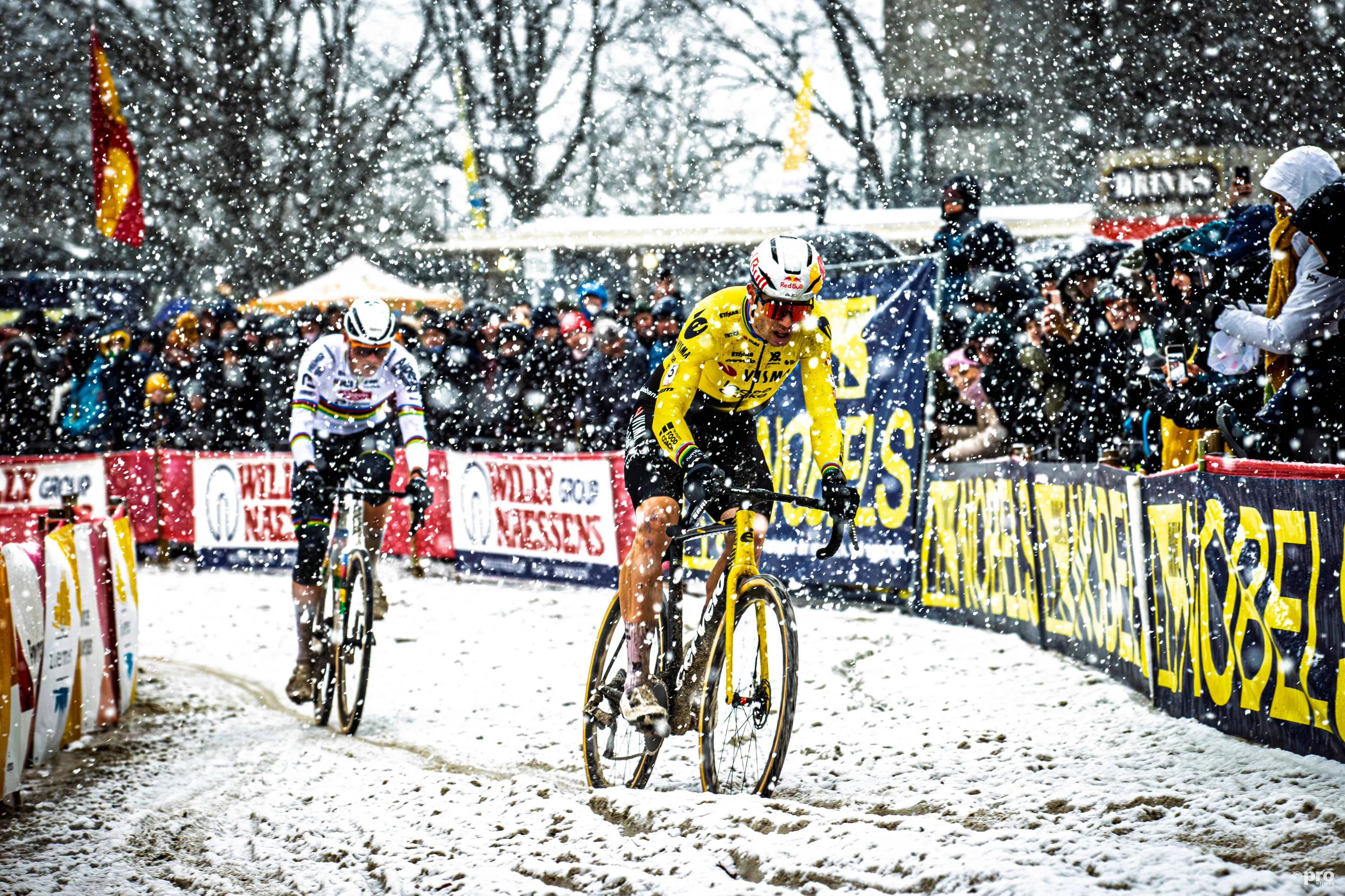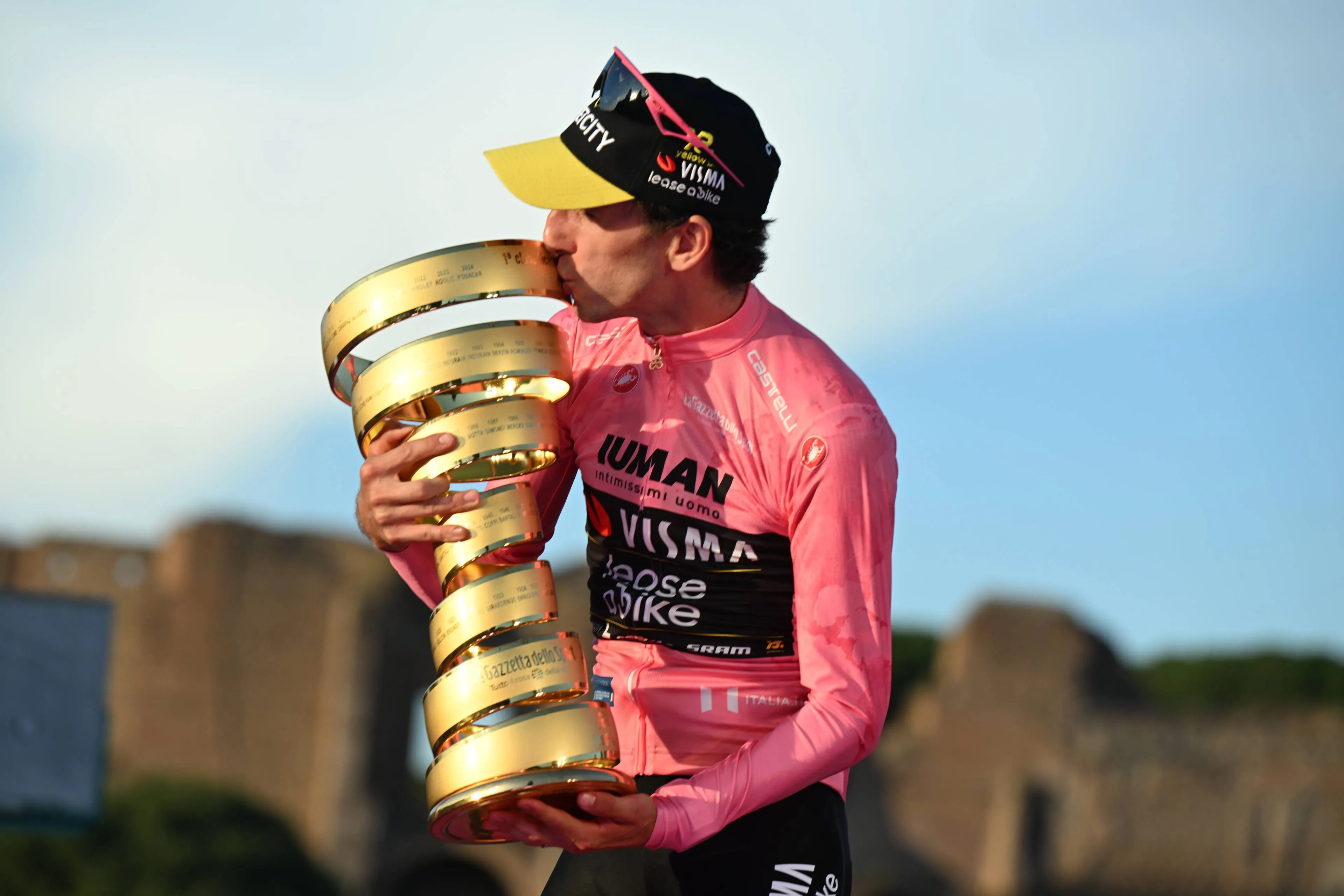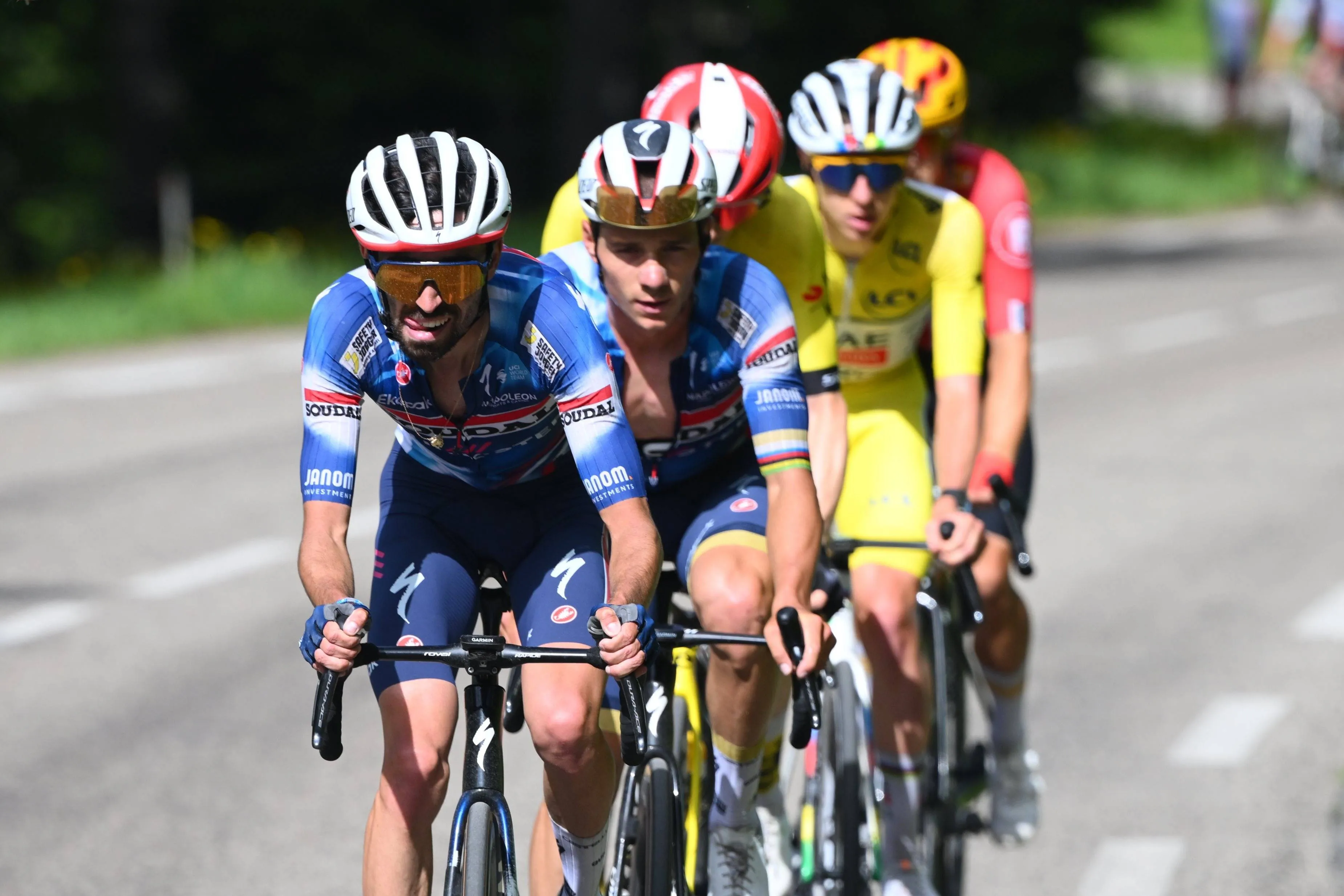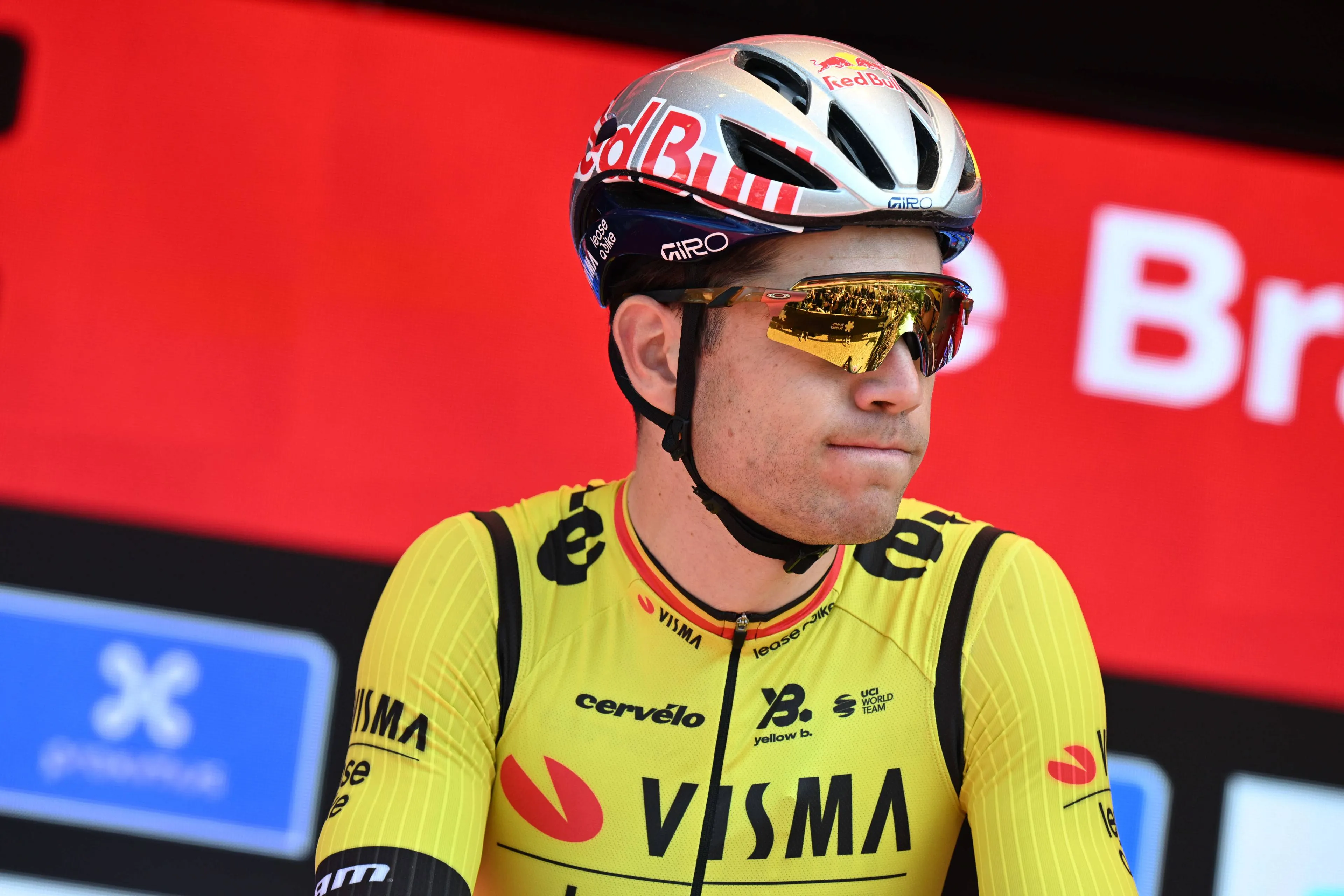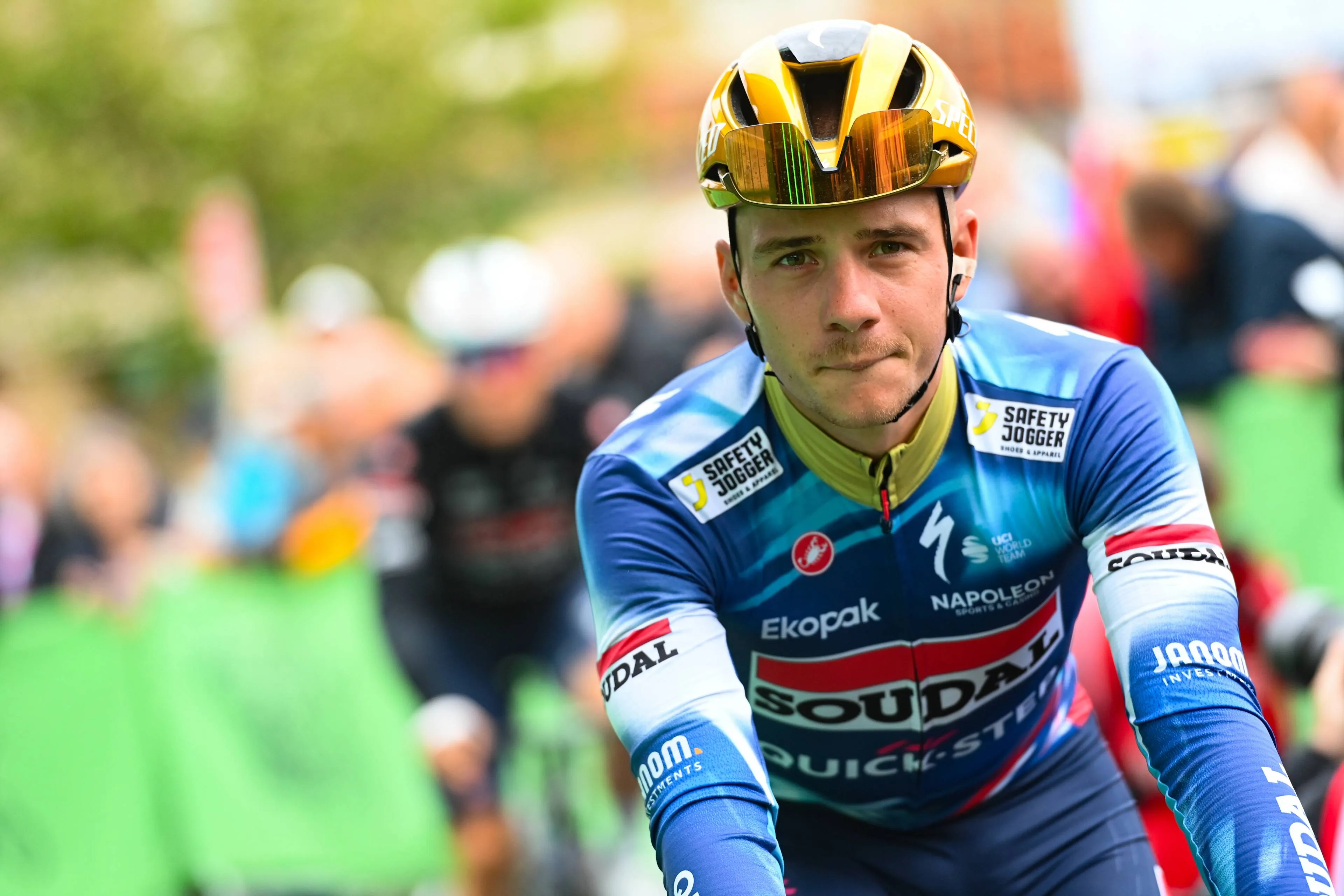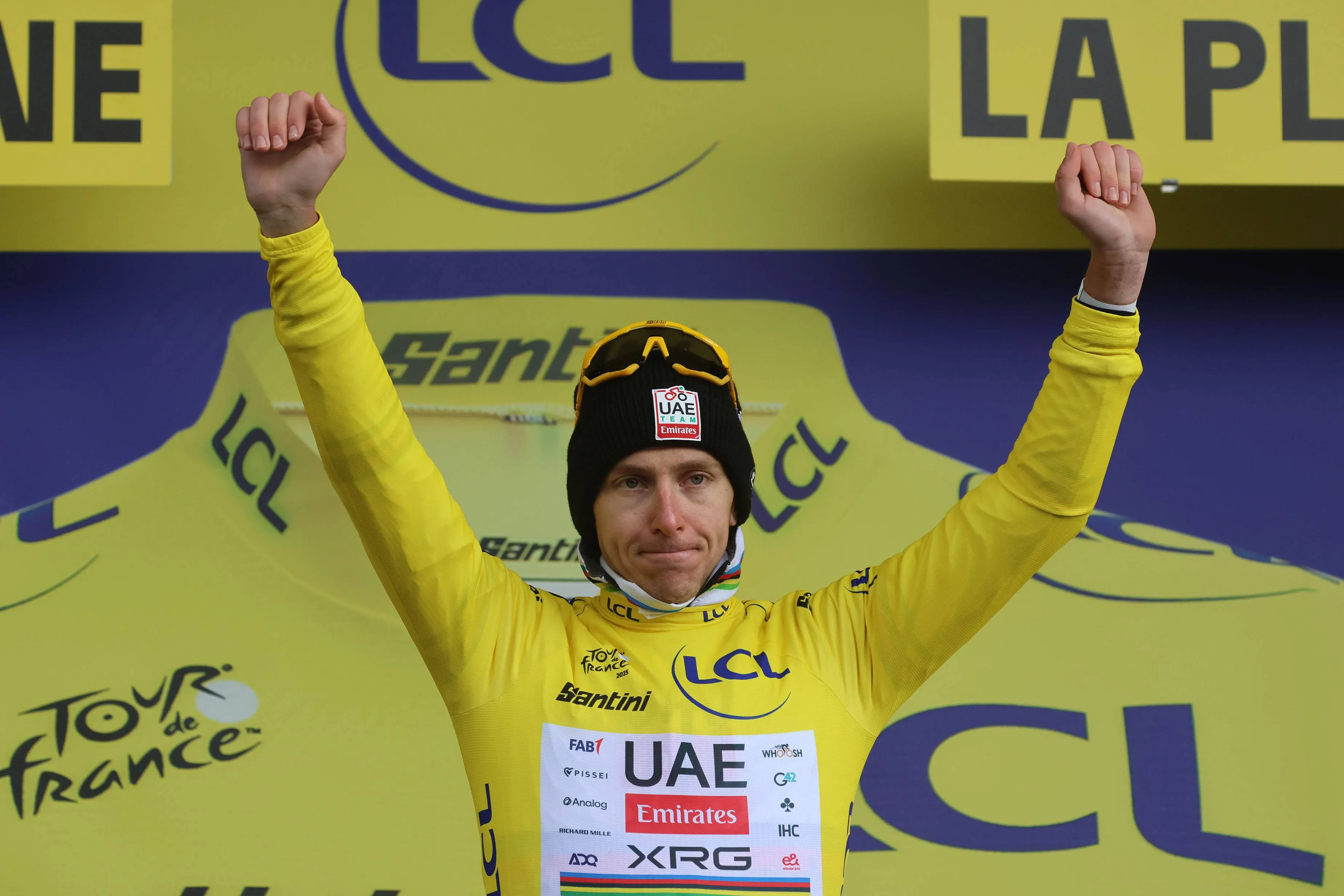Pedal Punditry #12 - Riders have suffered heat strokes at La Vuelta. WHERE is the extreme weather protocol?
CyclingTuesday, 27 August 2024 at 11:06
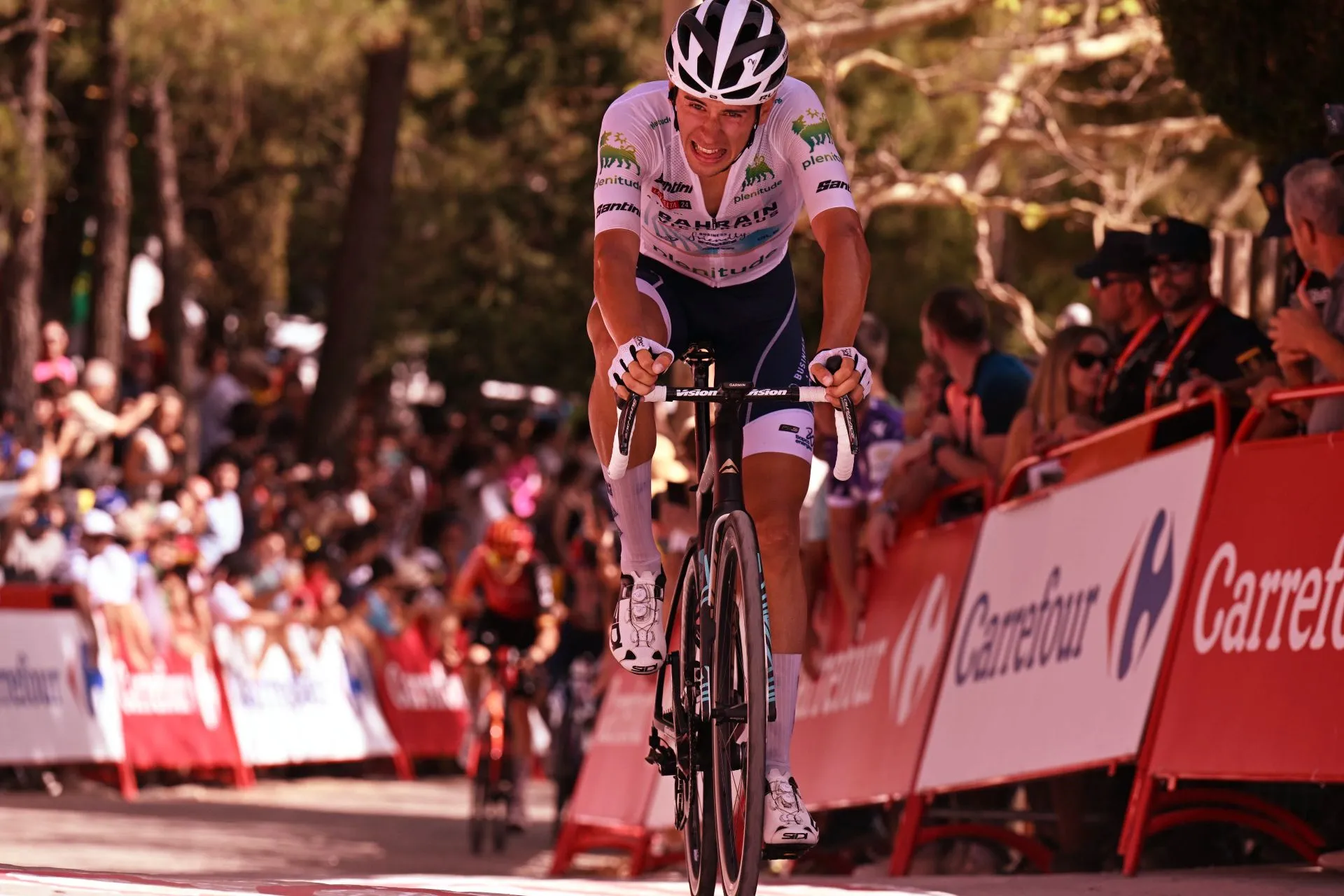
"Water, water please" were the first words Adam Yates said after winning stage 9 of the Vuelta a España. For many, the Spanish race has been one of survival and management in horrific conditions (even when they are winners), and several riders have suffered heat strokes. After 9 days it is time to finally ask: Where is the Extreme Weather Protocol and the UCI in all of this?
The heat has always been part of cycling, handling the conditions is part of the sport. Scenes such as those of big athletes conquering snowy peaks in the Alps are certainly memorable; Andy Hampsten's 1988 Passo di Gavia perhaps being the most notable example. Not as notable perhaps are the words of the riders who opposed racing under such conditions. Current Vuelta a España leader Ben O'Connor himself only three months ago called the Giro d'Italia organizers "dinosaurs" for trying to keep the Umbrailpass on the route of stage 16 despite the negative temperatures and heavy snowfall. The start was postponed until the very limit until ultimately, a flat alternative was provided starting in Laas.
In modern cycling, this has become something that is not overly rare. The explanation is not hard, the riders have to face brutal conditions to compete, and over the past decades there have been more and more efforts for their voice to be heard; and for them to make more decisions. No more scenes such as riders in hypothermia at the finish lines, collapsing on the side of the road during heat waves, or being terrified to be part of a peloton in days of heavy raining. The sport does not need such moments to be attractive, and the power of decision has been split more evenly amongst those who organize the race, and those who take part in it.
The current situation
The heat is affecting the Vuelta, quite a lot even. After the finale of stage 8, race leader Ben O'Connor had almost nothing to say except how he felt in those final kilometers of the Sierra di Cazorla. "It’s a bit frustrating that I boiled over. But everyone experiences it at some point. Too bad it was my turn today.” On stage 4 plenty riders lost unexpected time such as O'Connor, Adam Yates or Richard Carapaz. The Ecuadorian was quite clear in his post-race statements: "At the end I was also a bit short of water and it was very hot. I got into a desperation zone".
I was at the Vuelta in it's opening days and I can attest to how how it was in Castelo Branco at the finale of stage 3. With no AC, the school pavilion that was turned into a press room was so hot that just sitting I could look at my arms and see the sweat. It was the real deal, and the 10-minute walk to the finish line had me in a state where I was probably having some quite funny looks from the fans sitting in the few shades. Even if you don't take mine or some riders' words seriously and are someone who needs to see it with your own eyes, then this video shared by Astana is just the evidence you need to understand what's going on.
But the riders are not all silent about this. Michael Woods, in words to Velo, has said recently that "I think the extreme heat protocol should have already been in place. I think we’ve passed the limits". Temperatures felt on the tarmac are always higher than the weather forecast on a sunny day, but the Canadian says the temperature in his bike computer was as high as 49 degrees.
Stages 1, 2 and 6 were slightly cooler (a very pleasant ~30 degrees at the finish...) the rest have been days spent in an oven. 36 degrees in Castelo Branco and virtually the same could be seen at Pico Villuercas, Sevilla, Córdoba and again today in Granada. Several of these stages were packed with climbs, where the cooling effect of the wind is drastically reduced.
What has been done right
I couldn't keep track of the amount of times Adam Yates grabbed a bottle and poured it whole down his head during the climbs of the Alto de Hazallanas. But he isn't a specific case, he is just one of many who is in the same situation. As mentioned at the top of this article, Yates was desperately calling for water after winning in Granada and to my surprise it wasn't even to drink, but to pour once again over his head. A few minutes later Ben O'Connor downs an entire bottle in seconds whilst gripping it hard. Could you imagine the riders in the grupetto who suffer even more getting over climbs but have to spend an extra 10 minutes climbing that gruesome Andaluzian mountain?
The Vuelta has rider representatives. 15 of them. But the complaints haven't surged. That's a good thing actually, it means the teams implementing measures to work in this heat have been working. Part of why there hasn't been so many harsh words and calls for measures is because at the Vuelta each team has dozens and dozens of staff members, the highest tech in and after stages, and just a massive deployment of resources to support the riders.
This means extra soigneurs and race staff on the side of the road and motorbikes respectively to hand out water, ice vests as far as the eye can see, many ice baths after the stages; endless amounts of ice bags or other types of cycling-specific gadgets for them to be able to cool down. I think all of this logistical masterpiece sees riders dealing with the heat better than some minor-level races where there is only half the staff. But here are there the criticism falls through cracks, as was the case with Israel - Premier Tech's Woods.
The heat strokes
It has now happened. Thymen Arensman was suspected to suffer from it after stage 7, ultimately he was treated at the hospital and remained in the race. During stage 9 fourth placed rider in the GC and leader of the Youth classification Antonio Tiberi withdrew from the Vuelta with heat stroke. This is when your body enters a state of overheating and begins to affect your consciousness and speech mainly. For a cyclist this can be specially dangerous, taking into consideration the high speeds and lack of body protection that can lead to crashes with very bad consequences at worst.
Now we are at a point of the race where the heat is not only something the riders have to manage as best as possible, but becoming something that is directly threatening their health. Who knows how many 'Arensman's' there are that have not been captured on camera over the past week? I suspect there number is higher than 0, because the heat the riders have been under (and specially in the mountainous days) is something truly brutal when taking up such efforts. Regardless, 1 is already too many and avoidable.
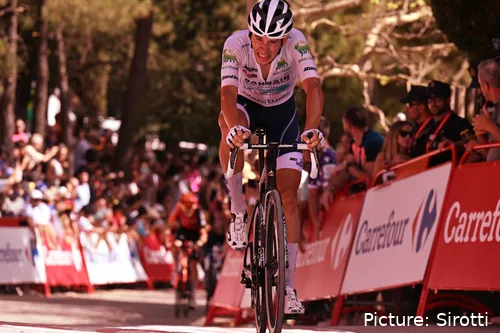
Antonio Tiberi finished fourth on the 8th stage of the Vuelta a España. The next day he abandoned with heat stroke. @Sirotti
UCI's Extreme Weather Protocol
But the riders are not forced into racing under such conditions. This was introduced in 2015, the reasons are very obvious but I have also explained the logic above. Climate change has motivated further action as well, and heat training also routinely became part of training for many professional riders because this is the current reality. When this protocol is used is a decision by the race commissaires, teams and riders taken together. The UCI has a few graphs that helps understand the decision making:
*The WBGT index is used to measure heat stress under direct sunlight.

How to calculate and interpret the WBGT index. @UCI
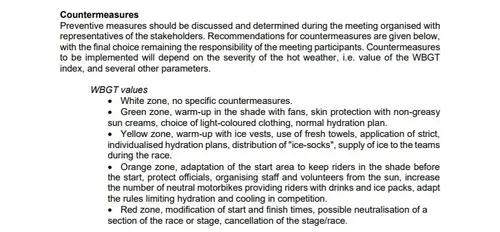
Recommendations provided by the UCI for each WBGT index value. @UCI
Taking the temperature forecast, wind speed and humidity, it is possible to access the heat stress that the peloton will face. This is then divided into five different categories, as listed above. In Granada this was according to my calculations around 26.5 degrees. Just within limit of the orange zone, but this wasn't the hottest day the Vuelta has faced thus far. Even so, the orange zone already advises the organizers to adapt the start area for extra shade, increase neutral motorbikes handing out water and reduce the limitations on taking water from team staff in the final kilometers of the stage. This has been followed correctly thus far.
Entering the red zone, which may have happened in some days - if not then it was almost there - advises the modification start and finish times (which would be a logistical nightmare for the organizers and only a last resort), possible neutralization or cancelation of the stage. Thus far, none of these have happened, and have not been a mediatic topic.
It becomes an interesting topic. The Vuelta is now heading north during the rest day and the heat should not be much of an issue over the coming two weeks. At least, not in the way it has thus far. Have the organizers and team staff indeed done enough to mitigate the effects of the heat well enough for the race to remain unchanged? Could this Vuelta be used as an example for future events that will be ran under these conditions? Or is it the lack of a direct criticism from a big voice somehow prevented an outrage in the peloton and amongst fans? After 9 days of racing (and 2 more in Lisbon) I have had a constant sensation that the heat would ignite a big controversy at the Vuelta but this hasn't truly happened. I wonder if after the fact, now riders will more openly come out and talk about these days in a figurative hell.
claps 8visitors 8
Just in
Popular news
Latest comments
- Congratulations to Simon on a fantastic career, and respect to him for choosing this time to retire.
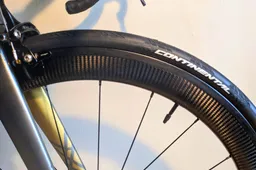 santiagobenites07-01-2026
santiagobenites07-01-2026 - Out of the blue came this..
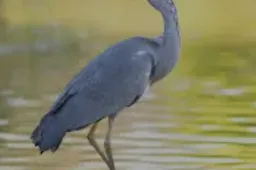 leedorney07-01-2026
leedorney07-01-2026 - Quite unfair to say this..
 leedorney07-01-2026
leedorney07-01-2026 - He went at his very peak level achievement. But i think todays sport is shortening the life of a rider at the very top which except for some super responders or Talented riders not many can matchabstractengineer07-01-2026
- Their mainstay is going to be Tim Merlier for sprint wins and others for some breakaway wins. They will not figure in the monuments or the GC GTsabstractengineer07-01-2026
- Remco although a great rider, he doesn't have the temperament of a champion. The moment he loses a race, he becomes negative and it hurts his chances. The only way he can win is if Pogi gets hurt.PogiFan2Day07-01-2026
- This decision seems to make it clear that Jonas is riding the Giro D'Italia. Simon obviously wanted to defend his title and wasn't able to.PogiFan2Day07-01-2026
- The track record speaks volumes. He has only finished half of his GTs. Compare that to Pogi or Jonas almost 100%. he mostly has at least one bad day. Also he crashes a lot. He is more of a one day racer, a TT specialist who can also do GTs not the other way around. plus he is losing to Pogi Jonas by 5 minutes. So dont think he will beat Pogi ever in GTsabstractengineer07-01-2026
- That's a good one... joke of the year.NikkoNicco07-01-2026
- Wasn't expecting him to retire before Froome!joebloggs07-01-2026
Loading
7 Comments
